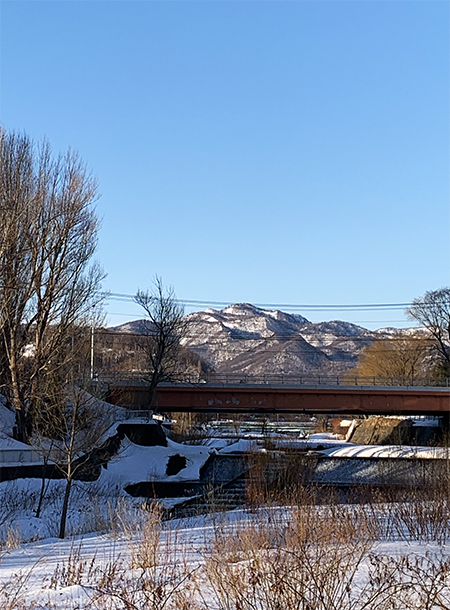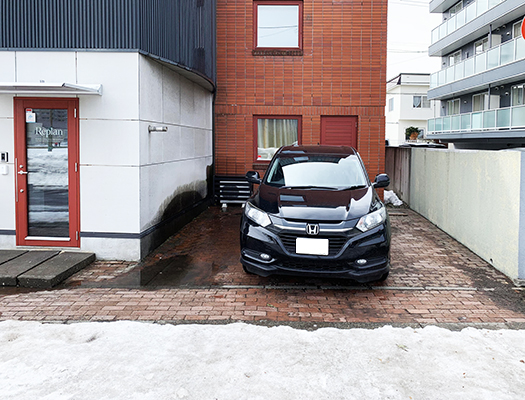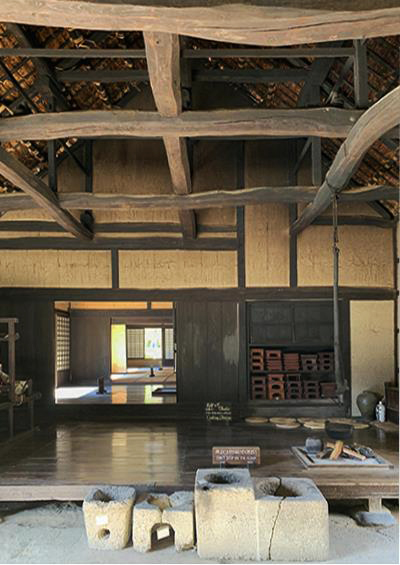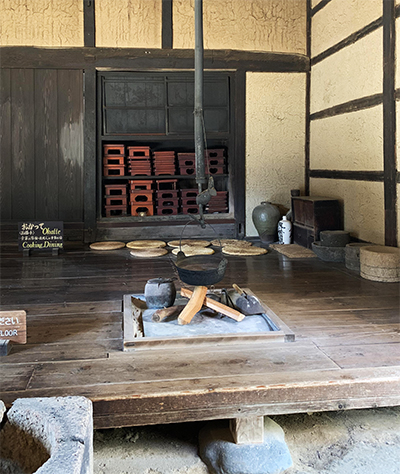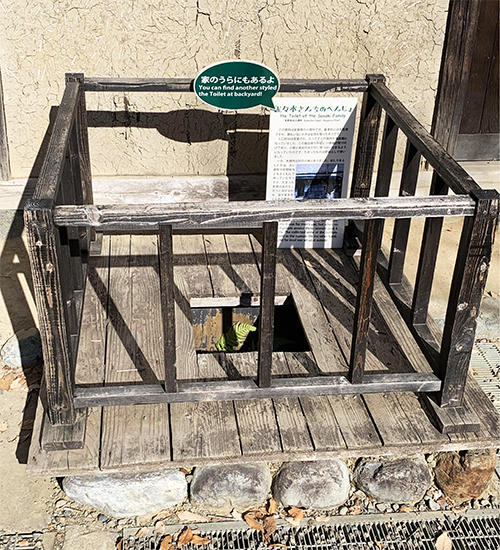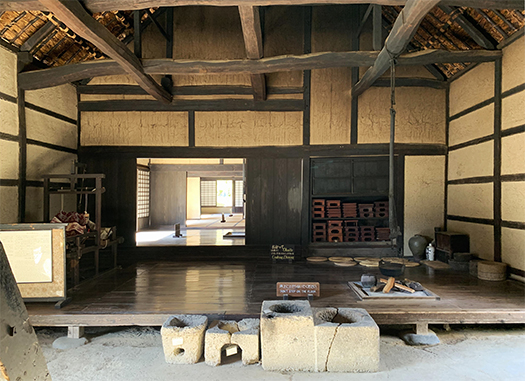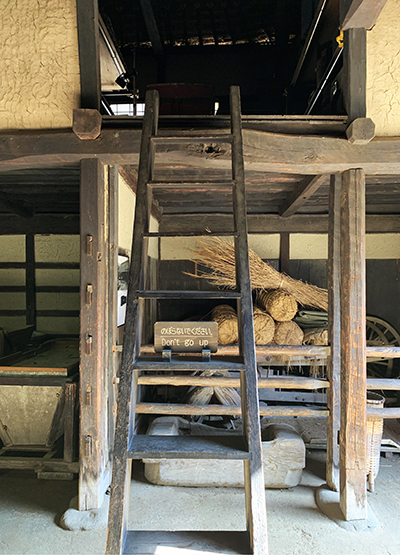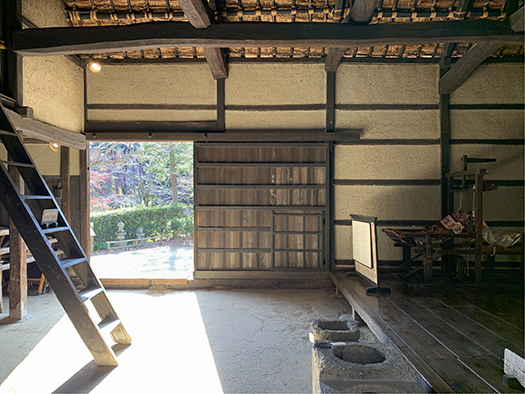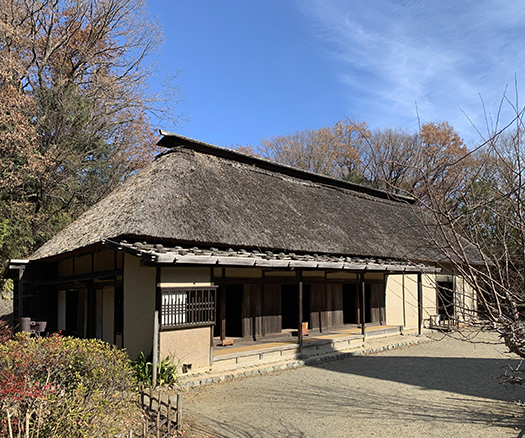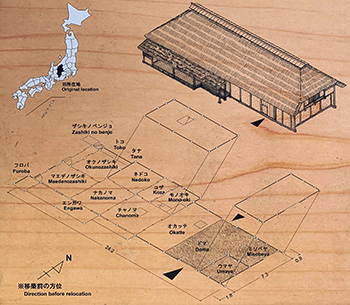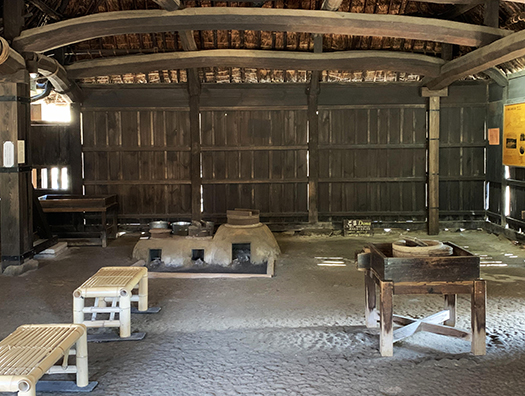
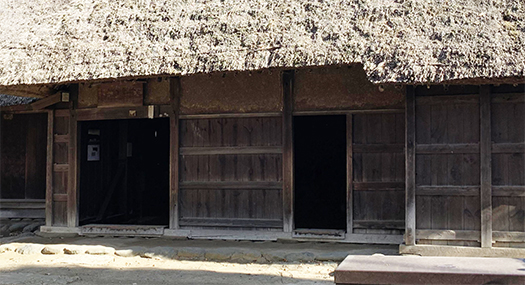
きのう、先行的に「高札」について書いた常陸の旧太田家住宅の土間空間です。
この建物は「分棟」形式という南方由来と目される、いわば用途別の棟が
個別に存在して、その用途にあわせて人間生活の方が移動する
そういったスタイルが見られる住宅とされています。
より南方の沖縄の古民家での、完全に「食堂」と「居間」が分離して
一度は外に出て往還するという「分棟」ではなく棟同士は接合している。
各棟の屋根が合流する地点・谷に盛大な雨樋も存在する。
で、この住宅では主要な入口である棟のほうは
完全に土間だけの空間が広がっている。
用途としては馬屋が収容されていたり、農作業空間であったり、
かまどが据えられて煮炊きの用途にも使われている空間。
基本的には農作業空間としての必要性に準拠して造作されている。
収穫した穀物類の脱穀や籾すり、選別や精白作業、さらに漬物や
味噌醬油の仕込み作業などがこういう場所で行われてきた。
土間のことを「ニワ」と呼んで、ウチニワ・ソトニワ・カドニワなどと
その場所に対して名称を与えられてきている。
いかにも神聖な仕事場として清浄が保たれる工夫もされてきて、
土間面が傷んできたら、石灰を撒いて固めたり清潔の保持にも努めていた。
ウチのニワはまさに農事作業の最重要な仕上げ工程であり、
いかにも「夜なべ仕事」の中核的な場所だったのだと思います。
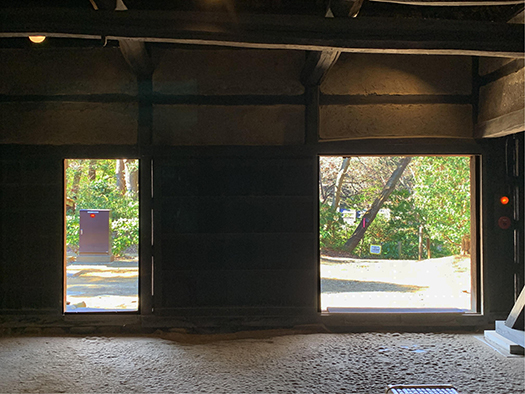
都市部の商家などでも同様にこうした空間が日本人に普遍的に利用された。
まさに根がらみの民族性を涵養した空間なのだと思える。
日本人の働く場所として、基底的に刷り込まれているものがある。
現代に至って、この普遍的空間性は日本人の空間から消えつつある。
いわゆる「住宅」は労働の場という側面をほぼ喪失したか、
あるいは労働の概念が変容してパソコンに向かってのデスクワーク主体になった。
土間から「事務室」空間に様変わりしたといえるのでしょう。
現代のテレワーク・リモートワークでまた仕事の場としての機能が
住宅に求められるようになって、変化のきっかけは生まれてきている。
現代の土間、仕事空間がどう生成されていくのか、いまがリアルタイムだと思う。
しかし一方でインテリアとしての土間の復権というのも
興味深い分野になるのではないかと思っている。
事実そのような空間が試行されてきていると感じられますね。
さて先日、東日本大震災10年ということで、
災害に対する住まいの「守り」と「備え」というテーマでの記事計画を
ご案内しましたが、ReplanWEBマガジンで記事がアップされました。
家づくりの基本 ‒ もしもの備え2021.3.17
これまでの取材事例などから、うち続く災害へ、誰もが心がけるべきポイントを
まとめた記事になっています。ぜひご一読ください。
English version⬇
[Hitachi farmhouse soil space / good Japanese house ㉖-1]
Yesterday, it is the dirt floor space of the former Ota family residence in Hitachi, where I wrote about “Kosatsu” in advance.
This building is considered to be derived from the south, which is called a “branch building”, so to speak
It exists individually, and human life moves according to its purpose.
It is said that the house has such a style.
The “dining room” and “living room” are completely separated in an old folk house in Okinawa to the south.
The buildings are joined together rather than being a “branch building” where you go out and go back and forth.
There is also a large rain gutter in the valley where the roofs of each building meet.
So, in this house, the main entrance building is
The space is completely open to the dirt floor.
It can be used as a horse shop, as a farm work space, etc.
A space where a kamado is installed and is also used for cooking.
Basically, it is designed according to the necessity as an agricultural work space.
Threshing and hulling of harvested grains, sorting and polishing work, and pickles
Miso soy sauce preparation work has been done in such places.
The dirt floor is called “Niwa”, and it is called Uchiniwa, Sotoniwa, Kadoniwa, etc.
The place has been given a name.
It has been devised to keep it clean as a sacred workplace.
When the soil surface was damaged, I tried to sprinkle lime to harden it and keep it clean.
Our Niwa is exactly the most important finishing process of agricultural work,
I think it was the core place of “night pot work”.
Similarly, such spaces were universally used by Japanese people in urban merchant houses.
It seems that it is a space that cultivates the rooted ethnicity.
Some of the places where Japanese people work are basically imprinted.
In modern times, this universal spatiality is disappearing from the Japanese space.
Did the so-called “housing” almost lose its aspect of a place of work?
Alternatively, the concept of labor has changed, and it has become the subject of desk work toward personal computers.
It can be said that the space has changed from a dirt floor to an “office” space.
Modern telework and remote work can also function as a place of work
With the demand for housing, the opportunity for change is born.
I think it’s real time now to see how modern soil and work spaces are created.
However, on the other hand, the restoration of the dirt floor as an interior is also
I think it will be an interesting field.
In fact, I feel that such a space is being tried.
By the way, the other day, 10 years after the Great East Japan Earthquake,
Article planning on the theme of “protection” and “preparation” of housing against disasters
As I mentioned, an article has been uploaded in Replan WEB magazine.
Basics of building a house-Preparation for what-if 2021.3.17
From the cases of interviews so far, to the disasters that will continue, the points that everyone should keep in mind
It is a summarized article. Please read it.
Posted on 3月 18th, 2021 by 三木 奎吾
Filed under: 住宅マーケティング, 日本社会・文化研究 | No Comments »





